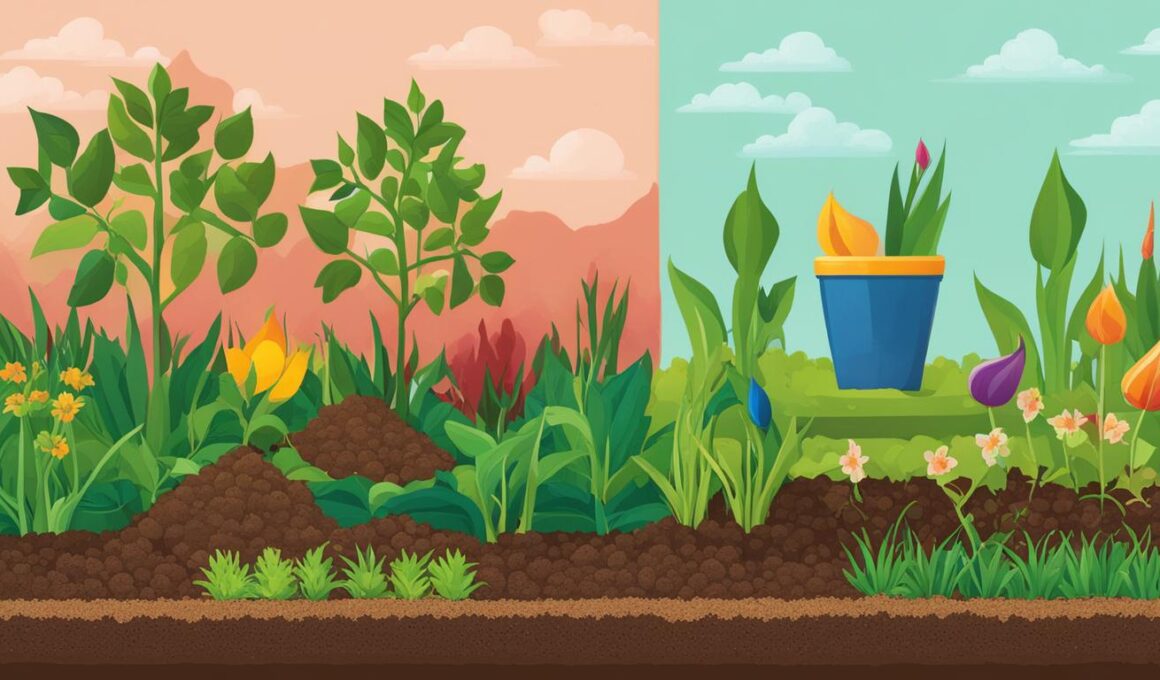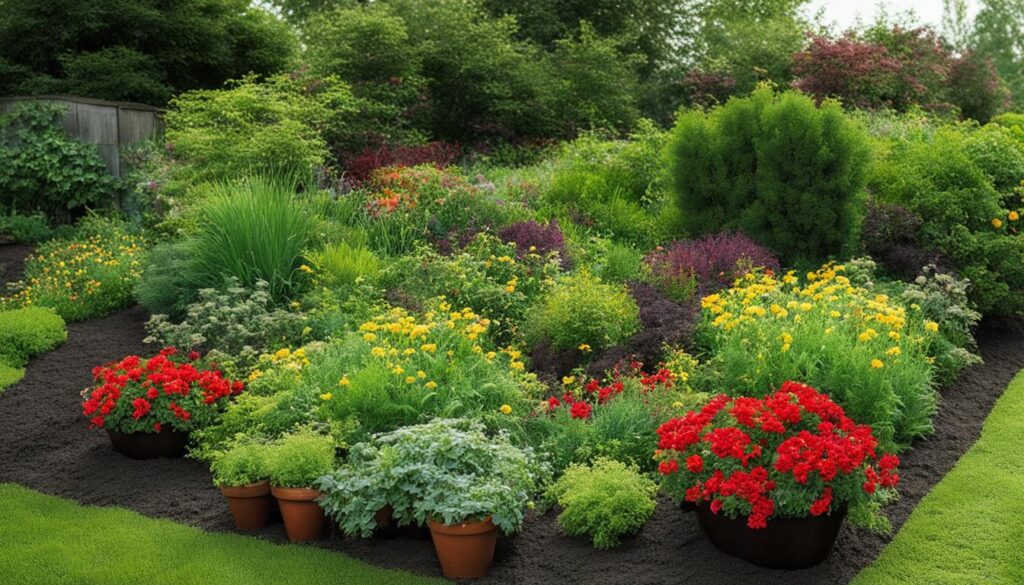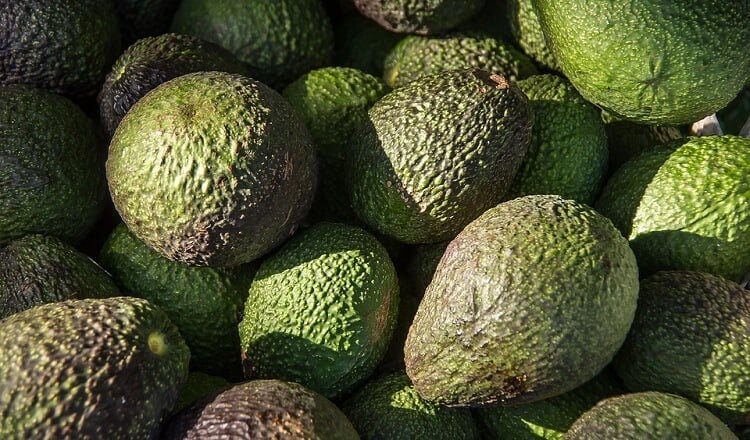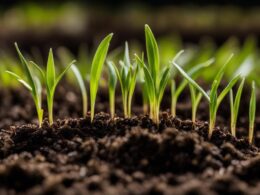Confusion often arises when it comes to understanding the difference between fertilizer and plant food. While these terms are sometimes used interchangeably, they actually refer to distinct substances with different roles in supporting plant growth. In this article, we will explore the differences between fertilizer and plant food, helping you make informed choices for your garden.
Post Summary
- Fertilizer and plant food are not the same; they serve different purposes in supporting plant growth.
- Plant food is naturally produced by plants through photosynthesis, while fertilizer is a man-made or commercially available substance.
- Fertilizer provides additional nutrients to supplement plant nutrient needs, while plant food is the natural sustenance produced by plants.
- Understanding the differences between fertilizer and plant food is essential for optimizing plant health and maintaining a thriving garden.
Understanding Plant Food
Plant food is an essential component in supporting the growth and health of plants. It is created through the process of photosynthesis, where plants use sunlight, water, and carbon dioxide to produce glucose, their primary source of energy. Nutrients obtained from the soil, such as nitrogen, phosphorus, and potassium, also play a crucial role in the production of plant food.
During photosynthesis, plants convert sunlight into energy, which is stored in the form of glucose. This energy allows plants to carry out various essential functions, including cell division, growth, and reproduction. Additionally, the nutrients absorbed from the soil act as building blocks for the synthesis of proteins, enzymes, and other vital components within the plant.
“Photosynthesis is the process through which plants produce their own food by converting sunlight into glucose, utilizing nutrients from the soil.”
The production of plant food not only sustains the individual plant but also benefits the ecosystem as a whole. By releasing oxygen as a byproduct of photosynthesis, plants contribute to the maintenance of atmospheric air quality, enabling the survival of other living organisms.
Importance of Plant Food:
Understanding the process of photosynthesis and the role of plant food is crucial for gardeners and plant enthusiasts. By providing plants with adequate sunlight, water, and nutrients, you can ensure their optimal growth and development. Remember, healthy plants are the foundation of a thriving garden.
| Nutrients | Function |
|---|---|
| Nitrogen | Aids in leaf and stem growth |
| Phosphorus | Promotes root development and flower formation |
| Potassium | Enhances overall plant health and disease resistance |
Exploring Fertilizer
Fertilizer is a substance that is added to the soil to provide plants with additional nutrients necessary for growth. It can be made at home using household ingredients or purchased commercially. Fertilizers come in various forms, including liquid, granules, and spikes, and can be organic or inorganic. The nutrients in fertilizers, such as nitrogen, phosphorus, and potassium, supplement the nutrients naturally found in the soil to support plant health and development.
One of the key benefits of using fertilizer is its ability to ensure that plants receive a balanced supply of essential nutrients, even if the soil they are planted in is lacking in certain elements. Fertilizers can help correct nutrient deficiencies and promote optimal growth and productivity. Additionally, fertilizers can improve soil fertility over time by replenishing nutrient levels and enhancing microbial activity.
Organic fertilizers, such as compost or animal manure, offer the advantage of being natural and environmentally friendly. They provide slow-release nutrients and improve soil structure, moisture retention, and nutrient holding capacity. On the other hand, inorganic fertilizers, also known as synthetic or chemical fertilizers, may deliver nutrients faster and in a more concentrated form. However, they can be more expensive and may have a higher environmental impact if not used properly.
The Benefits of Fertilizer
Using fertilizer has several advantages for plant growth and development. Some of the key benefits include:
- Promoting healthy root development and overall plant growth.
- Enhancing the production of flowers, fruits, and seeds.
- Improving plant resistance to diseases and pests.
- Increasing nutrient availability in nutrient-deficient soils.
- Boosting crop yields and improving agricultural productivity.
By providing essential nutrients in the right quantities, fertilizers can help plants thrive and reach their full potential. However, it’s important to use fertilizers responsibly and follow recommended application rates to avoid negative impacts on the environment and plant health.
Macronutrients for Plant Growth
Macronutrients are essential for the growth and development of plants. They are required in large quantities and play crucial roles in various plant functions. The three primary macronutrients for plant health are nitrogen, phosphorus, and potassium.
Nitrogen is responsible for promoting foliage growth and aids in essential processes such as photosynthesis and protein synthesis. It is crucial for the development of lush green leaves and the overall vigor of the plant.
Phosphorus is essential for root development and helps in the production of flowers, fruits, and seeds. It plays a vital role in energy transfer within the plant and contributes to the overall health and productivity of the plant.
Potassium is involved in multiple plant functions, including water absorption, enzyme activation, and overall plant health. It helps in the regulation of stomatal openings, allowing the plant to efficiently use water and resist drought stress.
Macronutrient Functions
| Nutrient | Function |
|---|---|
| Nitrogen | Promotes foliage growth, photosynthesis, and protein synthesis |
| Phosphorus | Supports root development, flower, fruit, and seed production |
| Potassium | Aids in water absorption, stomatal regulation, and overall plant health |
These macronutrients are often combined in different proportions, known as the NPK ratio, which is specified on fertilizer labels. By providing plants with the right balance of these macronutrients, gardeners can ensure optimal plant growth, robust root systems, healthy foliage, and bountiful harvests.
Micronutrients for Plant Health
In addition to macronutrients, plants also require small amounts of micronutrients for optimal growth and health. Micronutrients like zinc, iron, and boron play various roles in plant processes such as root development, photosynthesis, and flower production. These micronutrients are often included in fertilizers to ensure plants receive a well-rounded nutrient supply.
Table: Micronutrients and Their Functions
| Micronutrient | Function |
|---|---|
| Zinc | Aids in enzyme activity, protein synthesis, and hormone production. It is essential for growth and development, especially in young plants. |
| Iron | Key component of chlorophyll, necessary for photosynthesis and the production of energy. It also plays a role in enzyme activity and nitrogen fixation. |
| Boron | Facilitates cell division, pollen development, and flowering. It also aids in the movement of sugars within the plant and helps regulate nutrient uptake. |
These micronutrients are typically required in very small quantities compared to macronutrients, but their absence or deficiency can have significant impacts on plant health. Plants may exhibit symptoms such as stunted growth, yellowing leaves, and poor flower or fruit production when lacking these essential micronutrients.
It is important to note that while micronutrients are essential for plant health, excessive amounts can be harmful. Too much zinc, iron, or boron can lead to toxicity and negatively affect plant growth. Therefore, it is crucial to follow recommended dosage guidelines when applying fertilizers containing micronutrients and regularly monitor plant health to ensure a balanced nutrient supply.
Organic vs. Inorganic Fertilizers
When it comes to fertilizing your plants, you have the option of choosing between organic and inorganic fertilizers. The choice you make can have a significant impact on the health of your plants and the overall health of your soil. Understanding the differences between these two types of fertilizers is essential for making an informed decision.
Organic fertilizers are derived from natural sources such as composted manure, bone meal, or fish emulsion. These fertilizers add organic matter to the soil, improving its structure and enhancing nutrient retention. Organic fertilizers release nutrients slowly, providing a steady supply of nutrients to your plants over time. They also promote the growth of beneficial microorganisms in the soil, which further contributes to soil health.
Inorganic fertilizers, also known as synthetic or chemical fertilizers, are manufactured using synthesized chemicals. These fertilizers are typically more concentrated and provide a quick release of nutrients to your plants. Inorganic fertilizers are often formulated to have specific NPK ratios, allowing you to target the nutrient requirements of different plants. However, excessive use of inorganic fertilizers can lead to nutrient imbalances and can have negative impacts on soil health.
Organic vs. Inorganic Fertilizers: A Comparison
| Organic Fertilizers | Inorganic Fertilizers | |
|---|---|---|
| Nutrient Release | Slow release of nutrients | Quick release of nutrients |
| Soil Health | Improves soil structure and nutrient retention | Can have negative impacts on soil health if overused |
| Environmental Impact | Minimal environmental impact | Can contribute to pollution if not applied correctly |
| Cost | Generally more affordable | Can be more expensive |
Ultimately, the choice between organic and inorganic fertilizers depends on your gardening goals, preferences, and the specific needs of your plants. Organic fertilizers may be a better choice for those seeking long-term soil health and sustainability, while inorganic fertilizers can provide quick results for specific nutrient requirements. Consider the health of your soil, environmental impact, and the overall well-being of your plants when deciding which type of fertilizer to use.
The Importance of Proper Fertilizer Application
Proper fertilizer application is essential for maintaining healthy plants and preventing potential damage. Over-fertilization, which occurs when too much fertilizer is applied, can have detrimental effects on plant roots, leading to root damage and nutrient imbalances. This can make plants more susceptible to diseases and pests. To avoid these issues, it is important to follow the instructions provided on fertilizer labels and use slow-release options whenever possible.
When applying fertilizer, it is crucial to avoid fertilizing during droughts or when plants are wet. Fertilizing under these conditions can lead to nutrient runoff and waste, as the plants may not be able to absorb the nutrients effectively. Additionally, over-fertilization can contribute to nutrient imbalances in the soil, which can harm plant health and overall growth.
Using compost as an alternative to traditional fertilizer can be a beneficial practice as well. Compost acts as a slow-release fertilizer, providing a steady supply of nutrients to plants over time. It also improves soil structure and water-holding capacity, promoting healthy root development and reducing the risk of over-fertilization.
Proper Fertilizer Application Tips:
- Follow the instructions on fertilizer labels to determine the correct amount to apply.
- Use slow-release fertilizers to provide a steady nutrient supply.
- Avoid fertilizing during droughts or when plants are wet.
- Consider using compost as an alternative to traditional fertilizers.
| Fertilizer Application Mistakes | Potential Consequences |
|---|---|
| Over-fertilization | Root damage, nutrient imbalances, increased susceptibility to diseases and pests |
| Applying fertilizer during drought or when plants are wet | Nutrient runoff, ineffective nutrient absorption |
Proper fertilizer application is crucial for plant health. Over-fertilization can lead to root damage, nutrient imbalances, and increased vulnerability to diseases and pests. By following the instructions on fertilizer labels and using slow-release options, you can ensure that your plants receive the nutrients they need without causing harm. Additionally, utilizing compost as a natural fertilizer alternative can provide a balanced nutrient supply and improve soil health.
Soil pH and Fertilizer Effectiveness
When it comes to fertilizing your plants, understanding the impact of soil pH on fertilizer effectiveness is crucial. Soil pH refers to the acidity or alkalinity of the soil, and it plays a significant role in nutrient absorption by plants. Different plants have different pH preferences, and maintaining the right soil pH can help ensure that your plants can access the nutrients they need.
The pH scale ranges from 0 to 14, with 7 being neutral. Values below 7 indicate acidic soil, while values above 7 indicate alkaline soil. Most plants thrive in slightly acidic to neutral soil, with a pH range of 6 to 7.5. When the soil pH is outside this optimal range, certain nutrients may become less available for plant uptake, even if they are present in the soil. This can lead to nutrient deficiencies and hinder plant growth.
To determine your soil’s pH, you can use a pH testing kit or send a soil sample to a laboratory for analysis. Depending on the results, you may need to adjust the pH to optimize fertilizer effectiveness. If your soil is too acidic, you can add lime to raise the pH. On the other hand, if your soil is too alkaline, adding elemental sulfur or acidifying fertilizers can help lower the pH.
The Impact of Soil pH on Nutrient Availability
Soil pH directly affects nutrient availability by influencing the solubility of different nutrients. Some nutrients, like iron and manganese, are less available in alkaline soil, while others, like phosphorus and calcium, may become less available in acidic soil. This means that even if you fertilize your plants adequately, they may still experience nutrient deficiencies if the soil pH is not within the optimal range.
For example, if your soil is too alkaline, your plants may struggle to absorb iron, resulting in yellowing leaves known as iron chlorosis. Adding an iron fertilizer or using chelated iron can help mitigate this issue. On the other hand, if your soil is too acidic, phosphorus may become less available to your plants, leading to stunted growth and poor flowering or fruiting. In such cases, applying phosphorus-rich fertilizers or adding bone meal can help address the deficiency.
| Nutrient | Optimal pH Range | Effects of pH Imbalance |
|---|---|---|
| Nitrogen | 6 – 7.5 | Reduced availability in acidic soil |
| Phosphorus | 6 – 7.5 | Reduced availability in alkaline soil |
| Potassium | 6 – 7.5 | Minimal impact |
| Iron | 5 – 6.5 | Reduced availability in alkaline soil |
| Manganese | 5.5 – 6.5 | Reduced availability in alkaline soil |
Remember, it’s crucial to consider both soil pH and nutrient requirements when selecting and applying fertilizers. By maintaining the optimal pH range for your plants, you can maximize fertilizer effectiveness and ensure that your plants receive the nutrients they need for healthy growth and development.
Potential Side Effects of Excessive Fertilization
While fertilizers play a crucial role in supporting plant growth, it’s important to be aware of the potential side effects that can arise from excessive fertilization. When applied in excess, fertilizers can lead to issues such as fertilizer burn, root damage, and nutrient deficiencies.
Fertilizer burn occurs when an excessive amount of fertilizer is applied to plants, leading to root damage and the appearance of yellow or brown patches on the foliage. This happens because the high concentration of nutrients can cause roots to become overwhelmed, resulting in their inability to absorb water properly. This, in turn, leads to dehydration and damage to the plant’s tissue.
Over-fertilization can also cause root damage due to the high salt content in some fertilizers. The excessive salts can accumulate in the soil and draw water out of the plant’s roots, leading to desiccation and ultimately root death. This can significantly affect the plant’s overall health and ability to take up nutrients and water from the soil.
Excessive fertilization can disrupt the delicate balance of nutrients in the soil, leading to nutrient deficiencies. When the soil is overloaded with certain nutrients, it can prevent the absorption of other essential nutrients by the plant. This imbalance can result in stunted growth, reduced flowering or fruiting, and overall poor plant health.
To prevent these side effects, it’s important to follow recommended application rates and guidelines provided by the fertilizer manufacturer. It’s also crucial to regularly monitor the plants for signs of over-fertilization and adjust the fertilizer application accordingly. Using slow-release fertilizers can help mitigate the risk of fertilizer burn, as they gradually release nutrients over time. Additionally, incorporating organic matter into the soil through compost can improve its nutrient-holding capacity and reduce the likelihood of nutrient imbalances.
| Side Effects of Excessive Fertilization | Description |
|---|---|
| Fertilizer Burn | The application of excessive fertilizer can lead to root damage and discoloration of the foliage. |
| Root Damage | Excessive salts in fertilizers can accumulate in the soil and cause dehydration and death of plant roots. |
| Nutrient Deficiencies | Excessive fertilization can disrupt the balance of nutrients in the soil, leading to deficiencies and poor plant health. |
Image: Excessive fertilization can have negative impacts on plant health and growth.
Environmental Impact of Fertilizer Use
Applying fertilizers can have significant environmental impacts if not done correctly. The improper use of chemical fertilizers can contribute to pollution and harm ecosystems. One of the main concerns is the potential for fertilizer runoff, where excess nutrients are carried away by rainwater or irrigation and enter nearby water bodies. This can lead to algal blooms, oxygen depletion, and even fish kills.
To minimize the environmental impact of fertilizer use, it is important to follow proper application techniques. Avoid over-fertilization and carefully follow the recommended application rates. Using slow-release fertilizers can also help reduce the risk of nutrient runoff. Additionally, it is crucial to avoid fertilizing during rainy periods or when the soil is already saturated, as this increases the likelihood of runoff.
“Properly managing fertilizer use is essential for protecting our environment and maintaining the health of our ecosystems. By using fertilizers responsibly and following best practices, we can help minimize the negative impacts on our water bodies and natural resources.”
Furthermore, the excessive use of fertilizers can harm soil microorganisms and disrupt the natural balance of ecosystems. It is important to consider the specific nutrient needs of your plants and avoid over-application. Conducting a soil test to determine the pH and nutrient levels can help guide fertilizer application and ensure optimal plant growth while minimizing environmental impact.
| Type of Environmental Impact | Description |
|---|---|
| Pollution | Improper use of fertilizers can lead to pollution of water bodies through nutrient runoff, contributing to algal blooms and harming aquatic life. |
| Disruption of Ecosystems | The excessive use of fertilizers can disrupt the natural balance of ecosystems by harming soil microorganisms and affecting nutrient cycling. |
Making an Informed Choice
When it comes to nourishing your plants and ensuring their health, understanding the difference between plant food and fertilizer is crucial. By making an informed choice, you can provide your plants with the necessary nutrients and optimize their growth. Consider the following factors to guide your decision-making process.
Plant Food vs. Fertilizer:
Plant food is the natural sustenance produced by plants through photosynthesis, while fertilizer is a man-made or commercially available substance that supplements plant nutrient needs. While plants can produce their own food, fertilizers can provide additional nutrients that might be lacking in the soil. It’s important to evaluate your plants’ specific requirements and the nutrient composition of the soil to determine whether plant food or fertilizer is needed.
Plant Health:
The health of your plants should be a top priority when choosing between plant food and fertilizer. If your plants are showing signs of nutrient deficiency, such as yellowing leaves or stunted growth, it may indicate the need for fertilizer. On the other hand, if your plants are thriving and displaying vibrant colors, they may not require additional nutrients beyond what they produce naturally. Regular observation and monitoring can help you gauge your plants’ health and make an informed decision.
Gardening Practices:
Your gardening practices and personal preferences also play a role in selecting between plant food and fertilizer. If you prefer organic gardening methods and want to minimize the use of synthetic substances, you may opt for plant food or organic fertilizers. These options provide nutrients gradually, enhancing soil health in the long run. Conversely, if you desire faster results and are open to using synthetic substances, inorganic fertilizers can be a viable choice. Evaluate your gardening philosophy and consider the long-term impact on your garden when making your decision.
| Factors to Consider | Plant Food | Fertilizer |
|---|---|---|
| Source | Produced by plants through photosynthesis | Man-made or commercially available substance |
| Requirements | Supplement nutrients naturally produced by plants | Provide additional nutrients lacking in the soil |
| Plant Health | May be sufficient for healthy plants | May be necessary for nutrient-deficient plants |
| Gardening Practices | Favored by organic gardeners | Offers faster results |
By considering factors such as plant requirements, plant health, and gardening practices, you can make an informed choice between plant food and fertilizer. Remember to monitor your plants’ health and adjust your approach accordingly. Whether you choose plant food or fertilizer, providing your plants with the necessary nutrients will contribute to their overall well-being and help you create a flourishing garden.
Conclusion
In summary, it is important to understand the differences between fertilizer and plant food. While plant food is naturally produced by plants through photosynthesis, fertilizer is a man-made or commercially available substance that supplements plant nutrient requirements. Plant food is the primary source of energy for plants, while fertilizer provides additional nutrients to support optimal growth and health.
By recognizing these distinctions, you can make informed choices when it comes to nourishing your plants. Consider factors such as your plants’ specific needs, soil pH, and the environmental impact of your gardening practices. Following proper application techniques and avoiding over-fertilization are crucial for preventing negative effects on plant health and the environment.
Remember, fertilizers come in different forms, including organic and inorganic options. Organic fertilizers add organic matter to the soil and release nutrients slowly, improving soil health in the long term. Inorganic fertilizers, on the other hand, provide nutrients directly to the plants and act faster. Understanding the pros and cons of each type will help you make the right choice for your garden.
Ultimately, maintaining a healthy garden requires a balance between natural plant food production and the supplemental use of fertilizers. By understanding the distinctions between fertilizer and plant food, you can provide your plants with the necessary nutrients for optimal growth, while being mindful of the environmental impact of your gardening practices.
Can Using Fertilizer and Plant Food Help Increase Gardening Profits?
Using the right fertilizer and plant food can make a significant difference in your gardening profits. By ensuring your plants are well-nourished, you can increase yield and overall plant health, leading to higher profits. Follow these make money gardening tips to maximize your success.
FAQ
What is the difference between plant food and fertilizer?
Plant food is the natural sustenance produced by plants through photosynthesis, while fertilizer is a man-made or commercially available substance that provides additional nutrients to support plant growth.
How is plant food created?
Plant food is created by plants through the process of photosynthesis, using sunlight, water, carbon dioxide, and nutrients absorbed from the soil.
What is fertilizer?
Fertilizer is a substance that is added to the soil to provide plants with additional nutrients necessary for growth. It can be made at home using household ingredients or purchased commercially.
What nutrients are important for plant growth?
Macronutrients, including nitrogen, phosphorus, and potassium, are essential for plant growth and development.
What are micronutrients?
Micronutrients are small amounts of nutrients that plants require for optimal growth and health, such as zinc, iron, and boron.
What is the difference between organic and inorganic fertilizers?
Organic fertilizers are derived from natural sources and add organic matter to the soil, while inorganic fertilizers are synthesized chemicals that provide nutrients directly to the plants.
How should fertilizer be applied?
It’s important to follow the instructions on fertilizer labels, use slow-release options, avoid fertilizing during droughts or when plants are wet, and use compost as a slower-release fertilizer alternative.
Does soil pH affect fertilizer effectiveness?
Yes, soil pH plays a significant role in the effectiveness of fertilizer and a plant’s ability to absorb nutrients. Conducting a soil test can help determine the best fertilizer and nutrient adjustments for optimal plant growth.
What are the potential side effects of excessive fertilization?
Excessive fertilization can lead to fertilizer burn, root damage, and nutrient imbalances in plants.
What is the environmental impact of fertilizer use?
Improper use of fertilizers can contribute to pollution and harm soil microorganisms and ecosystems.
How can gardeners make an informed choice between plant food and fertilizer?
Understanding the differences between plant food and fertilizer, considering factors such as plant requirements, soil pH, environmental impact, and proper application techniques, is essential for making informed choices.













